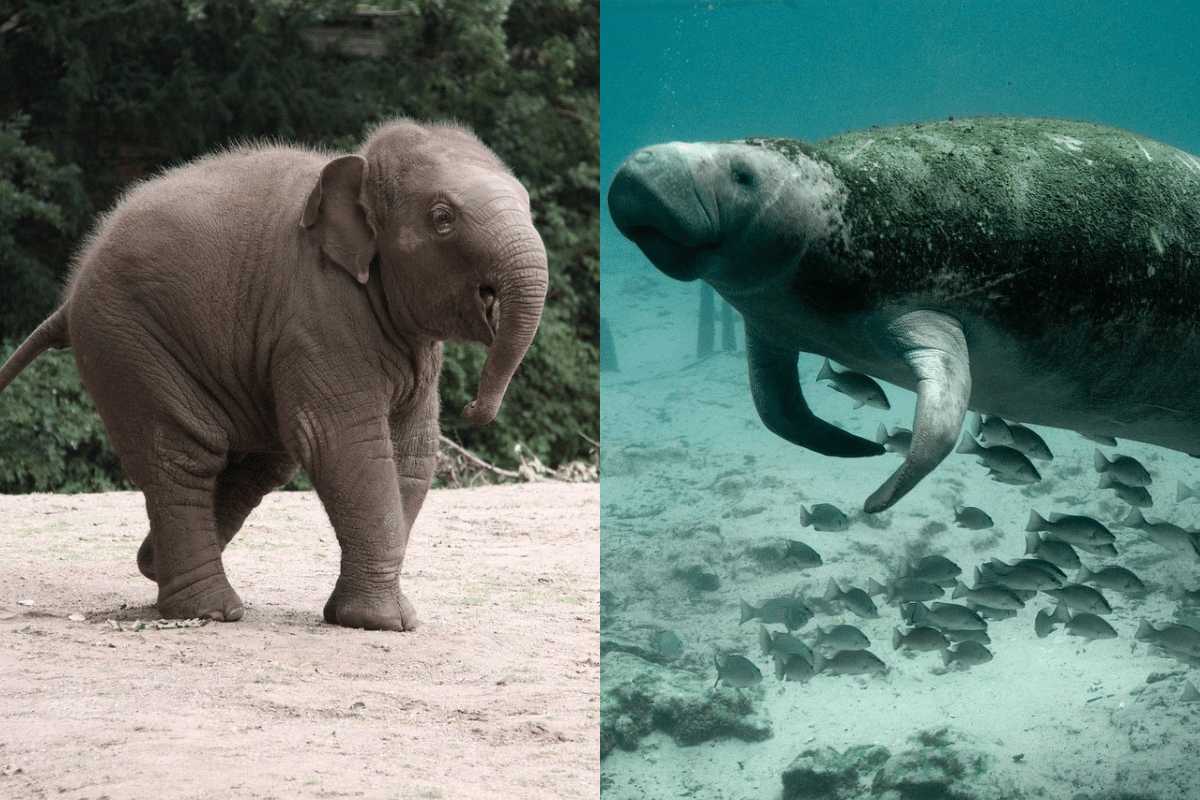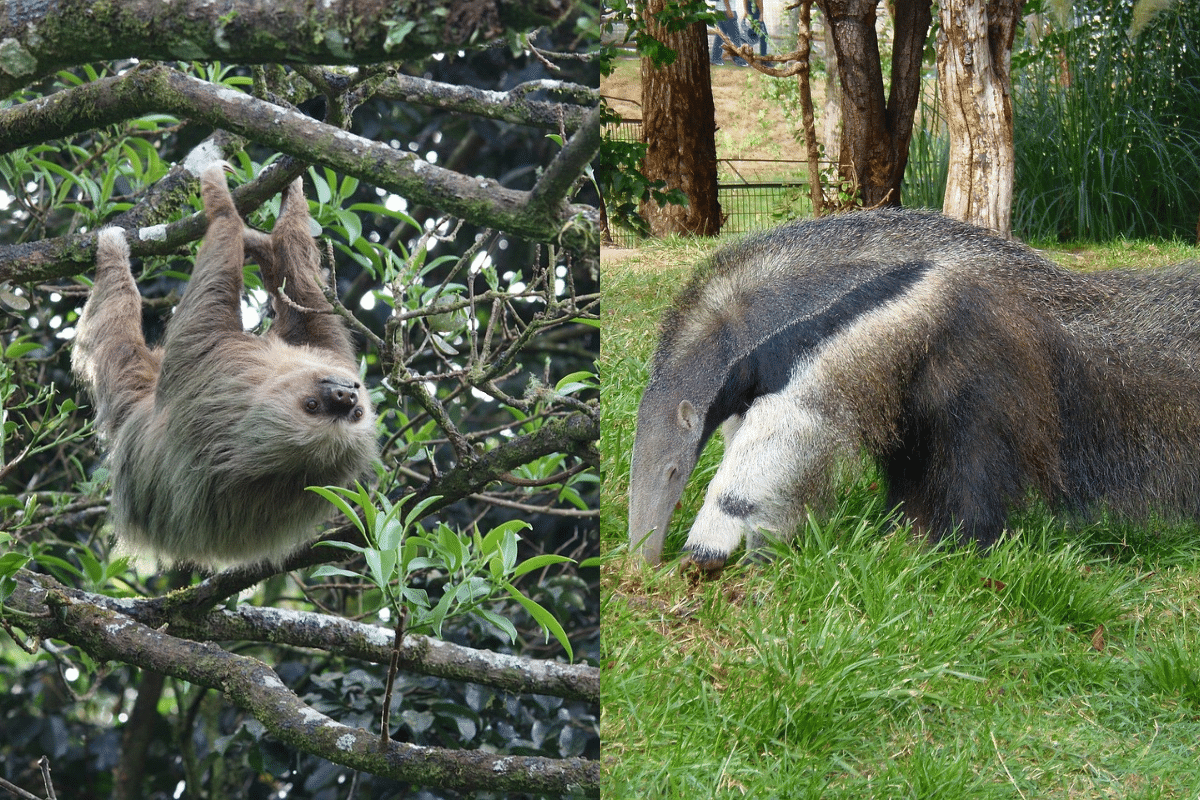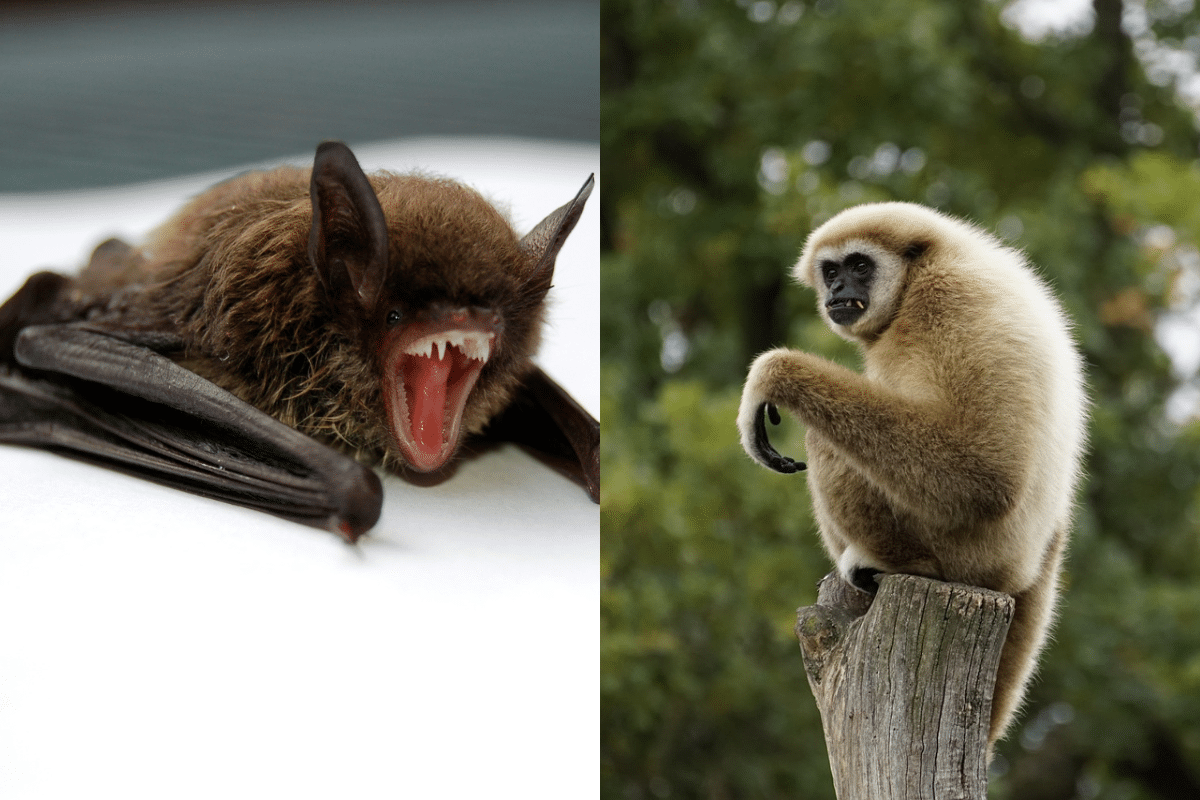 Shutterstock
Shutterstock
In the natural world, animals are often classified into different families based on their genetic and physical characteristics. However, some unexpected connections exist between creatures that might seem completely unrelated. These surprising family ties highlight the fascinating complexity of evolution and nature’s ability to blend traits across diverse species. By examining these unusual connections, we can gain a deeper understanding of how life on Earth has evolved in some truly unexpected ways. Here are just a few examples of animals that share family ties you might never have imagined.
Dolphins and Hippos
 Shutterstock
Shutterstock
Dolphins and hippos may seem like they belong in completely different worlds. One thrives in the ocean, while the other is a large, land-based mammal. But, surprisingly, both animals are genetically linked. They share a common ancestor from around 50 million years ago, despite their vastly different lifestyles, and are both part of the Cetancodontamorpha order, which also includes whales and porpoises.
Elephants and Manatees
 Shutterstock
Shutterstock
Elephants and manatees don’t appear to have much in common, but they are connected through their evolutionary history. Elephants are massive land mammals, while manatees are aquatic, gentle herbivores. However, both share an ancient common ancestor that lived more than 60 million years ago. The similarity in their bones and teeth structure highlights their surprising connection within the same group.
Sharks and Rays
 Shutterstock
Shutterstock
Sharks and rays are both intimidating ocean creatures but share more than just their habitat. They are closely related, both belonging to the class Chondrichthyes, which includes all cartilaginous fish. Despite their distinct appearances—sharks being streamlined predators and rays having flat, wing-like bodies—they both have skeletons made of cartilage instead of bone. Their similar physical traits make them distant cousins within the same family.
Cheetahs and Domestic Cats
 Shutterstock
Shutterstock
Cheetahs, famous for their incredible speed, may seem like an outlier among big cats, but they share a closer bond with domestic cats. Both are members of the Felidae family, although cheetahs diverged from other big cats millions of years ago. Unlike lions and tigers, cheetahs cannot roar but instead share behaviors with domestic cats, such as purring, grooming, and similar hunting techniques. Their shared family traits make them unique within the Felidae family.
Turtles and Birds
 Shutterstock
Shutterstock
Turtles and birds might seem like they belong to entirely different evolutionary branches. However, both animals share an ancient connection, originating from early amniotes millions of years ago. Despite their different lifestyles—turtles are slow-moving reptiles, and birds are fast-flying creatures—they share certain physical traits, such as similar heart and lung structures. This surprising connection between land-dwelling reptiles and flying creatures showcases the deep, shared roots of the animal kingdom.
Koalas and Wombats
 Shutterstock
Shutterstock
Koalas and wombats might look entirely different—one spends its time in the treetops while the other burrows underground. However, both are marsupials that belong to the same order, Diprotodontia. Despite their distinct lifestyles, these animals share several physical traits, such as similar reproductive systems and digestive systems. Their surprising family tie within the same group is a reminder of the incredible variety within Australia’s marsupials.
Sloths and Anteaters
 Shutterstock
Shutterstock
Sloths and anteaters are animals that appear to have no reason to be related, given their different habitats and lifestyles. Sloths are slow-moving tree dwellers, while anteaters are specialized in their diet and tend to stay closer to the ground. However, both belong to the order Pilosa, which also includes armadillos. Their shared characteristics, such as their slow metabolism and elongated limbs, prove how evolutionary traits can persist across different species.
Bats and Primates
 Shutterstock
Shutterstock
Bats, despite their nocturnal, winged characteristics, are more closely related to primates than you might think. Both groups of animals share a common ancestor that lived about 50 million years ago. Their similarities are especially clear when you compare their skeletal structures, particularly their hands. While bats developed wings and took to the skies, their ancestral link with primates challenges the way we think about the evolution of flying mammals.
Sea Lions and Bears
 Shutterstock
Shutterstock
Sea lions and bears seem to belong in completely different environments, yet both are part of the same family, Carnivora. Sea lions are pinnipeds that spend their time in the ocean, while bears are large land mammals. However, both animals share a common evolutionary ancestor and have similar physical traits, like the structure of their limbs. Their surprising family connection is a testament to the diverse ways evolution can shape animals in different habitats.
The Unexpected Family Tree
 Shutterstock
Shutterstock
Nature is full of surprises, and the unexpected family connections between animals provide fascinating insights into the intricate web of life. While we often focus on the more obvious relationships within the animal kingdom, these surprising ties remind us of the remarkable ways evolution has shaped diverse species over millions of years. From dolphins and hippos to bats and primates, the family tree of the animal world is full of twists and turns. Who knew that the koala’s closest cousin might just be a wombat, or that a crocodile might share more than just an old-world aesthetic with a bird? The more we learn, the more we realize that family connections in nature are far stranger than we could ever imagine.
 Toledo, United States.
Toledo, United States.